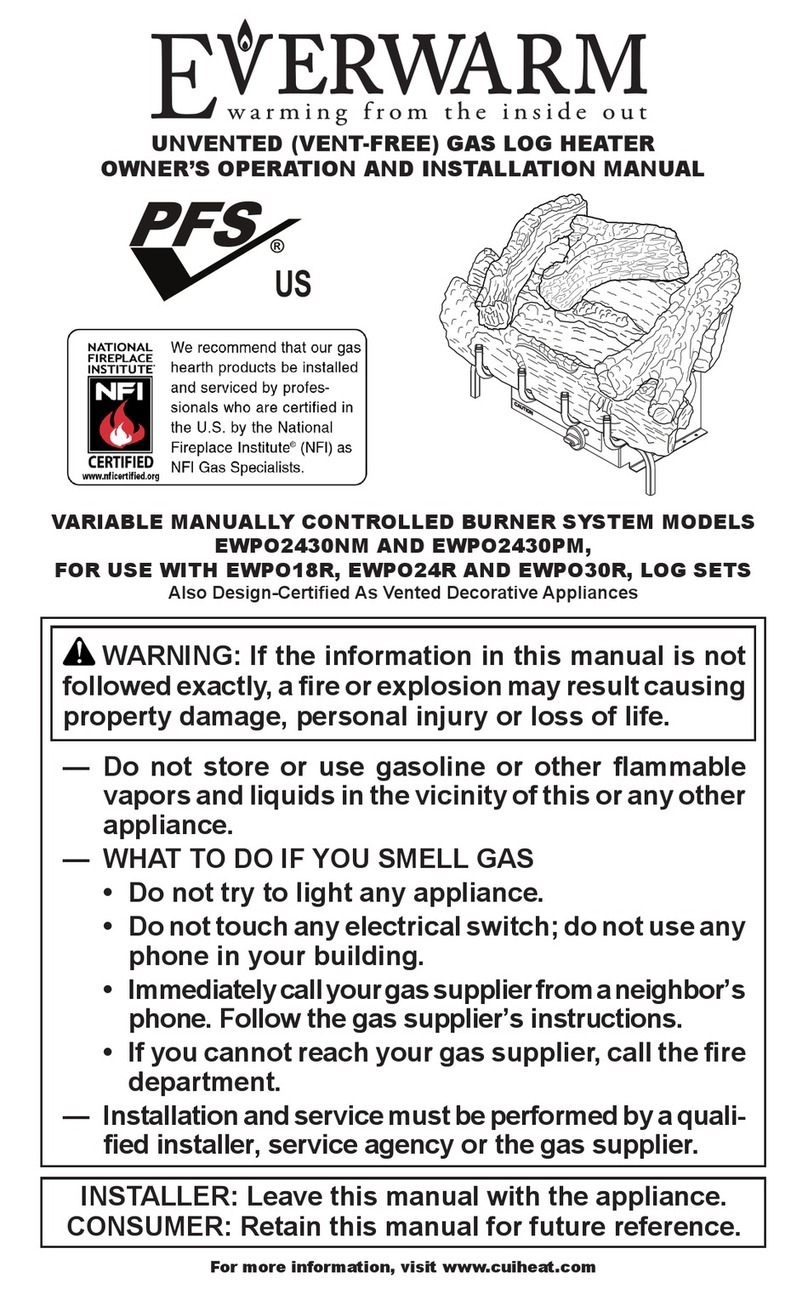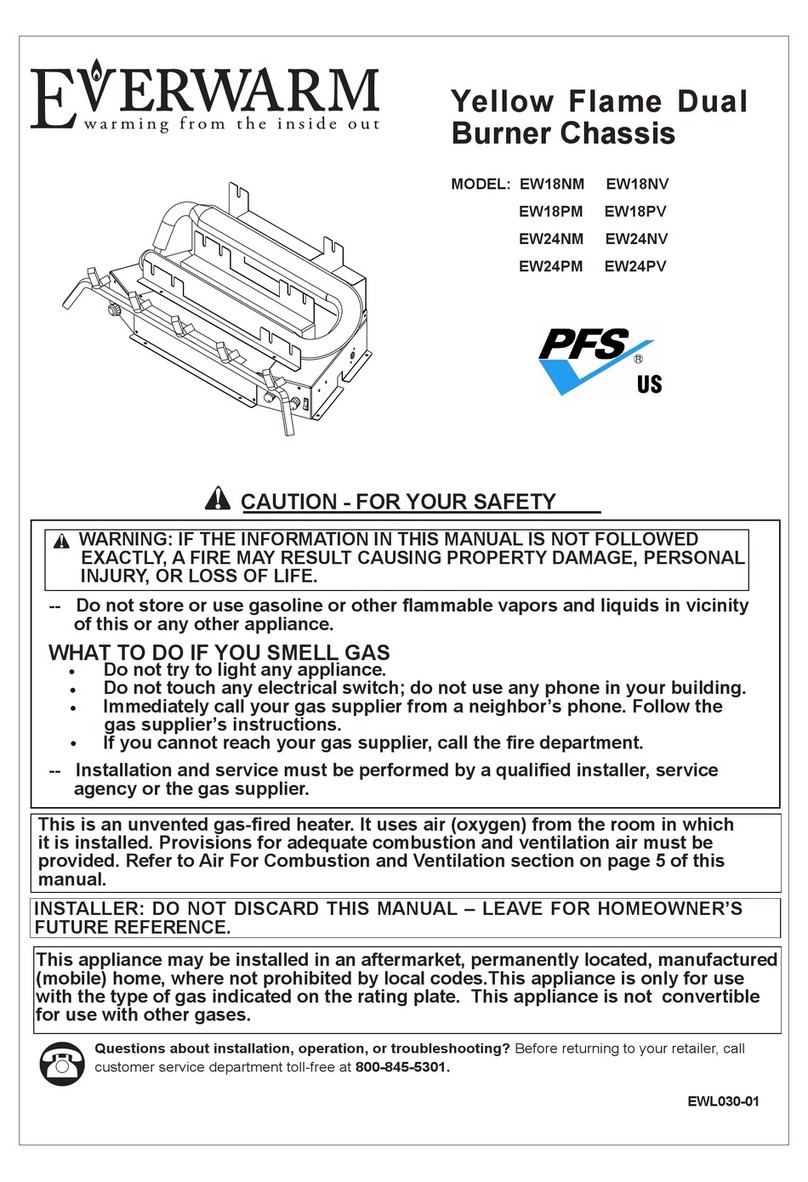
4
a.-
ventilation grills between rooms. Refer to
National Fuel Gas Code, ANSI Z223.1 - latest
edition, Section on Air for Combustion and
Ventilation.
b. Vent room directly to the outdoors. Refer to
National Fuel Gas Code, ANSI Z223.1 - latest
edition, Section on Air for Combustion and
Ventilation.
c.
space.
need no additional fresh air ventilation for an
This appliance shall not be installed in a room
combustion air is provided by the method
described in the National Fuel Gas Code, ANSI
Z223.1/NFPA 54, the International Fuel Gas
Code, or applicable local codes.
openings.
for purposes of servicing and proper operation.
COLD CLIMATE INSULATION
For cold climate installations, seal all cracks
around the appliance with noncombustible
material and wherever cold air could enter
the room. It is especially important to insulate
outside cavities between studs and under floor
on which the appliance rests, if floor is above
ground level. Gas line holes and other openings
should be caulked with high temperature caulk
in cold climates, a sheet of plywood or other
raised platform can be placed underneath to
prevent conducting cold up intothe room. It also
helps to
sheetrock inside surfaces and tape for
2. Divide the volume of space by 50 ft
3to
can support.
(volume of space – ft 3)/ 50 ft3
Example: 3072 ft
3/ 50 ft
3
3.-
ances in the space.
Vent-Free heater ________
Gas appliance #1* ________
Gas appliance #2 +________
Total =________
Example:
(water heater)
* Do not include direct-vent gas appliances.
Direct-vent is sealed combustion and draws
combustion air from the outdoors.
4
used.
_________
_________
Example:
-
port. You must provide additional fresh air.
WARNING
If the area in which the heater may be
operated does not meet the required
volume for indoor combustion air,
combustion and ventilation air shall
be provided by one of the methods
described in the National Fuel Gas
Code,ANSIZ223.1/NFPA54,theInter-
nationalFuelGas Code,or applicable
local codes.
COMBUSTION AND VENTILATION AIR
installed in these appliances may be located
in unusually tight construction provided the
with two permanent openings communicating
directly with an additional room(s) of suf-
of all connected spaces meets the criteria for
ANSI Z223.1/NFPA 54 - latest edition, Section
on Air for Combustion and Ventilation). Gener-
ally 50 ft3per 1,000 BTU input of all operating
appliances in the space.
space as a space whose volume is less than
50 ft 33per kw) of the
aggregate input rating of all appliances installed
whose volume is not less than 50 ft 3per 1,000
3per kw) of the aggregate input
rating of all appliances installed in that space.
Rooms communicating directly with the space
in which the appliances are installed, through
openings not furnished with doors, are consid-
a.
atmosphere have a continuous water vapor
retarder with a rating of one permor less with
openings gasketed or sealed, and
b.-
able windows and doors, and
c. Caulking orsealants are applied to areassuch
between sole plates and floors, between
penetrations for plumbing, electrical, and
gas lines, and at other openings.
1. Determine the volume of space — ft
3.
_____ ft
3
passageways or ventilation grills between
rooms).
Example:
ft
3
























